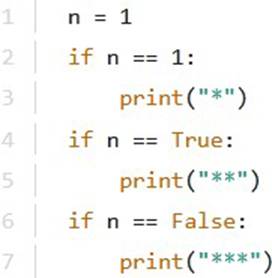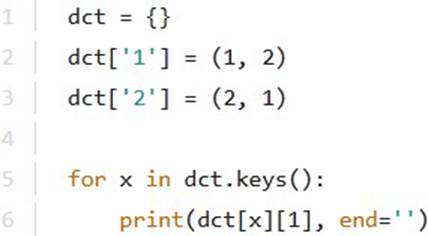Python Institute PCEP-30-02 Übungsprüfungen
Zuletzt aktualisiert am 30.12.2025- Prüfungscode: PCEP-30-02
- Prüfungsname: PCEP – Certified Entry-Level Python Programmer
- Zertifizierungsanbieter: Python Institute
- Zuletzt aktualisiert am: 30.12.2025
Question #11
What is the expected output of the following code?
print (type (1 / 2))
- A . <type ‚double‘>
- B . <type ‚int‘>
- C . <type ’number‘>
- D . <type ‚tuple‘>
- E . <type ‚ oat‘>
Question #12
What is machine code?
- A . A medium-level programming language consisting of the assembly code designed for the computer processor
- B . A low-level programming language consisting of binary digits/bit that the computer reads and understands
- C . A high-level programming language consisting of instruction lists that humans can read and understand
- D . A low-level programming language consisting of hexadecimal digits that make up high-level language instructions
Question #13
What do you call a tool that lets you launch your code step-by-step and inspect it at each moment of execution?
- A . An editor
- B . A debugger
- C . A console
Question #14
How many stars (*) will the following code output to the screen?

- A . one
- B . six
- C . two
- D . three
Question #15
An assertion can be used to:
- A . Stop the program when some data have improper values.
- B . Import a module.
- C . Make the Programmer more assertive.
Question #16
Which of the following operators can be used with strings?
1) +
2) *
3) –
4) in
- A . 1,2,3
- B . 1,2,4
- C . 1,2,3,4
- D . 1, 2
Question #17
How many stars will the following snippet print to the monitor?

- A . three
- B . one
- C . two
- D . zero
Question #18
Question #19
What is the expected output of the following code?

- A . [2]
- B . [3, 4, 5]
- C . The program will cause an error.
- D . [2, 3, 4, 5]
Question #20
Consider the following code.

With sentence describes the function the best?
A function de fi ned like function() …
- A . must be called with exactly one argument.
- B . may be called with any number of arguments (including zero).
- C . may be called without any argument, or with just one.
- D . must be called without arguments.

